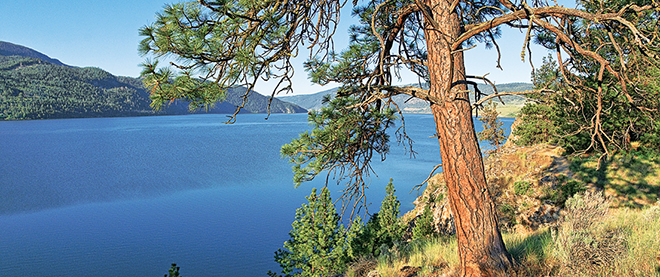For sale: Pristine wilderness property, just mind the mines
A developer takes on Ottawa over B.C. land littered with unexploded bombs, mortar shells and grenades
Michael Wheatley/All Canada Photos/Corbis
Share

The pristine wilderness around Kalamalka Lake near the city of Vernon, B.C., is a prime example of why the region is loved by tourists and residents alike. And, this being B.C., it was only a matter of time before property developers took note, too.
In 2005, Vancouver-based K & L Land Partnership began snapping up lots overlooking the lake, eventually acquiring 546 hectares and pouring more than $28.5 million into a planned residential subdivision. But what the developer insists it didn’t know at the time, and what it claims in a pair of lawsuits winding their way through B.C. courts, is that the land it bought is, quite literally, a minefield.
During the Second World War, areas around Vernon were used in military training operations, which included a mortar-practice range nearby Cosens Bay. After the war ended, though, many still-lethal munitions were left behind. Between 1944 and 1973, at least nine people were killed in the Vernon area after coming in contact with explosives.
But a lawsuit filed by the developer in B.C. Supreme Court against the attorney general of Canada alleges it wasn’t until 2011 that the Department of National Defence (DND) revealed to K & L that the land it had bought was also riddled with an unknown number of bombs, mortar shells and grenades, making it worthless for development. In seeking compensation from Ottawa for its losses, K & L claims the government committed an “ongoing unlawful act” by abandoning the explosives and failing to warn of the danger. K & L’s lawyer, Howard Shapray, says it’s not “rocket science” that the government should be held liable if its property—the unexploded bombs—is creating hazards.
It’s certainly a problem DND continues to deal with, decades after the explosives were initially left there. In 2005, it created the Unexploded Explosive Ordnance (UXO) and Legacy Sites Program to deal with the hundreds of locations across the country where explosives may be waiting to go off. Last year, between April and December, DND contractors used sensors to scan roads, trails and beaches in Kalamalka Lake Provincial Park, looking for suspicious metallic objects, according to DND spokeswoman Kathleen Guillot. Until a review of the data is finalized, it’s impossible to know how much ordnance remains there, or how much it would cost to remove them. But as DND warns on its website, “no UXO legacy site can ever be declared completely hazard-free.”
As far as the government is concerned, K & L’s problems at Kalamalka Lake boil down to “buyer beware.” In the government’s statement of defence, it argues that, had the developer done its homework, K & L would have discovered the existence of explosives on the land because they are “notorious, a matter of public knowledge in the community of Vernon and its environs, and have been and continue to be widely reported in local and national newspapers.”
Shapray disputes that, saying his client never would have bought the property had it known of the dangers. That will be up to the courts to decide. As for this idyllic patch of B.C. wilderness, it will continue to hold the secrets of its dangerous past.